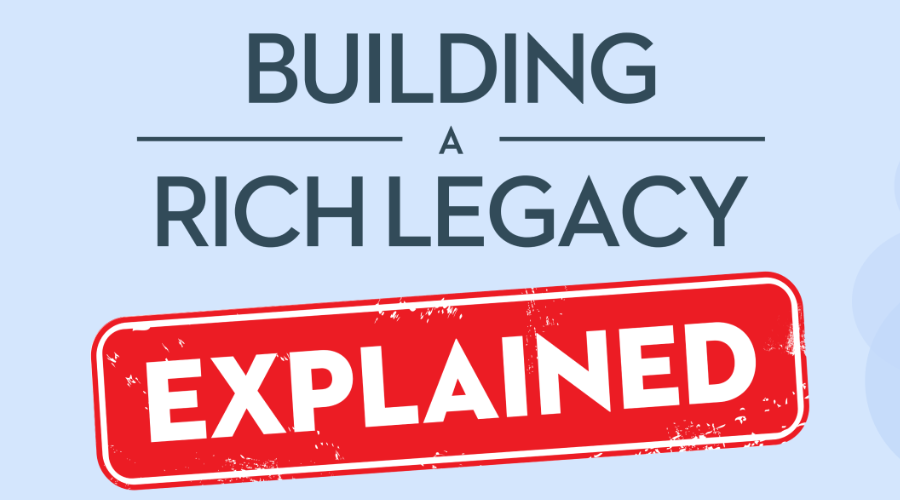As you approach retirement age, if you have registered retirement savings or pension plans, you’ll need to know all about Registered Retirement Income Funds (RRIFs). But what is a RRIF and how does it work?
What is a RRIF?
To begin, let’s better understand what a RRIF is. Unlike an RRSP, which is a retirement savings account that you deposit money into (likely contributing the most during your highest-earning years), the RRIF is designed to provide you with a steady stream of income in retirement by allowing you to withdraw a set amount each year (once you have reached a certain age). You can think of a RRSP and a RRIF as two sides of the same coin.
How does a RRIF work?
Now that you know what a RRIF is, how does it work? When you reach 71, the savings and investments you hold in RRSP accounts must be transferred into a lump sum withdrawal, an annuity or a RRIF. If you are married and your spouse is younger, you can wait until their 71st birthday.
A RRIF is a tax-deferred retirement income fund, meaning any interest or earnings within the account are exempt from tax. However, you will be taxed on the funds you take out and you must withdraw a minimum amount every year.
How to start a RRIF and the tax benefits of a RRIF
Similar to the process of setting up a RRSP, you can set up your RRIF account through a financial institution such as a bank, credit union, trust or insurance company. If you aren’t sure about your options, your financial institution can advise you on the types of RRIFs and the investments your RRIF can contain. Make sure you look around to compare the different fees and plans before deciding on the right option for you. Some questions to think about include what fees are charged, will there be any penalties to change the frequency you wish to withdraw your funds from your RRIF, can you make any extra withdrawals at any time you like, and what investment options are available to you within your RRIF.
You can open a RRIF anytime before the end of the year you turn 71 (or if your spouse is younger, the year they turn 71 – see above). Typically, you can only contribute to a RRIF by directly transferring certain amounts you received. This is primarily money from your RRSP, but transfers from other registered accounts, like pension plans and DPSPs, are also allowed under certain circumstances.
There are significant tax benefits of a RRIF. You will not pay any tax on the amount within your RRIF, as long as it stays there. This includes any interest, dividends or capital gains that come from your investments. You will, however, have to pay tax on the money that you withdraw from your RRIF. If you take out more than your set minimum amount, you will also have to pay withholding tax on the difference.
If you are not financially prepared for retirement, you may not be able to enjoy these years to the fullest. If you think you may not have sufficient savings then don’t worry, there are ways you can prepare for your retirement without the burden of any monthly mortgage payments.
How to convert RRSPs to RRIFs
Converting a RRSP to a RRIF can be done at any time. However, a RRSP must be converted to a RRIF, annuity, or paid out in a lump sum by the end of the calendar year that you turn 71.
If you are converting your RRSP to a RRIF, payments are not required to begin until the calendar year following the year that the RRIF account was opened.
How to withdraw from a RRIF
When it comes to a RRIF withdrawal, you must take out a minimum amount each year. This amount is based on a percentage of the value of your RRIF. You can choose regular monthly, quarterly, semi-annual or annual RRIF withdrawals depending on your lifestyle and needs. You will have to start withdrawing money from your RRIF the year after you open it. Keep in mind, all RRIF withdrawals are fully taxable.
It is important to think about how much money you need now vs. in the future. This will help to make sure your money lasts your retirement and so that you will have cash available when you need it most.
What happens if you need to withdraw money before you’re 71?
You can convert your RRSP income into a RRIF before you turn 71 and start drawing from it immediately. However, you will be taxed on those amounts up to the minimum and charged withholding tax on any amounts above the minimum.
What are your RRIF options?
You can keep the same investments you already hold in your RRSPs or switch to one of these options:
- Guaranteed Investment Certificates (GICs) or savings bonds will bring you a fixed rate of interest over a specific term. They are low risk investments, but the returns offered are also low.
- Exchange Traded Funds (ETFs) and Mutual Funds provide professionally managed, diverse investments. They have a higher potential for growth, which comes with a higher risk.
- Segregated funds are provided by insurance companies and guarantee a certain amount of your investment over a set time period. They offer better returns than GICs and less risk than Mutual Funds.
- Self-directed RRIFs for a portfolio that you manage – only recommended for knowledgeable investors.
- Fully managed RRIFs for a professionally managed portfolio – with management fees and a potentially high minimum investment.
What are the advantages of RRIFs?
Having a better understanding about what is a RRIF and how does it work will allow you to better understand the benefits. A key advantage is growing your investments in a tax-free account, so any increases in value are not subject to tax.
From the age of 65, there is a pension tax credit available on retirement income, for which RRIFs are eligible. Only RRSPs that provide annuity payments are eligible. You have the ability to move all of your investments over from your RRSPs to RRIFs. If you were to withdraw your RRSP investments in a lump sum, you would pay tax.
What are the disadvantages of RRIFs?
Your investments are depleted every year. You have to take out a minimum amount, dictated by the government and based on your age, beginning the year after you set up your RRIF. At age 64, you must withdraw 4% of your total investments. At 71, it rises to 5.28% and at 85, it’s 8.51%.
You don’t have to cash in investments, however. You can withdraw funds, for example from a mutual fund or bond and transfer them into a RRSP or non-registered account, but you will pay tax on the amount withdrawn.
If you take out more than the minimum amount, you will be subject to a withholding tax of 10% for amounts up to $5,000, 20% between $5,000-$15,000 and 30% for amounts over $15,000. You may qualify for a rebate if you pay a low tax rate.
What is the alternative to converting RRSPs to RRIFs?
If you’re under 71 and need more income to finance your retirement, but don’t want to pay tax on withdrawals or reduce your investments, there is an alternative. The CHIP Reverse Mortgage® from HomeEquity Bank allows you to access tax-free cash from the equity you have built up in your home and use that money as retirement income. This way, you maximize your investments for as long as possible and you don’t have to make regular mortgage payments, so it will boost your cash flow.
To find out more about the CHIP Reverse Mortgage, call us at 1-866-522-2447 or get your free reverse mortgage estimate now.
































